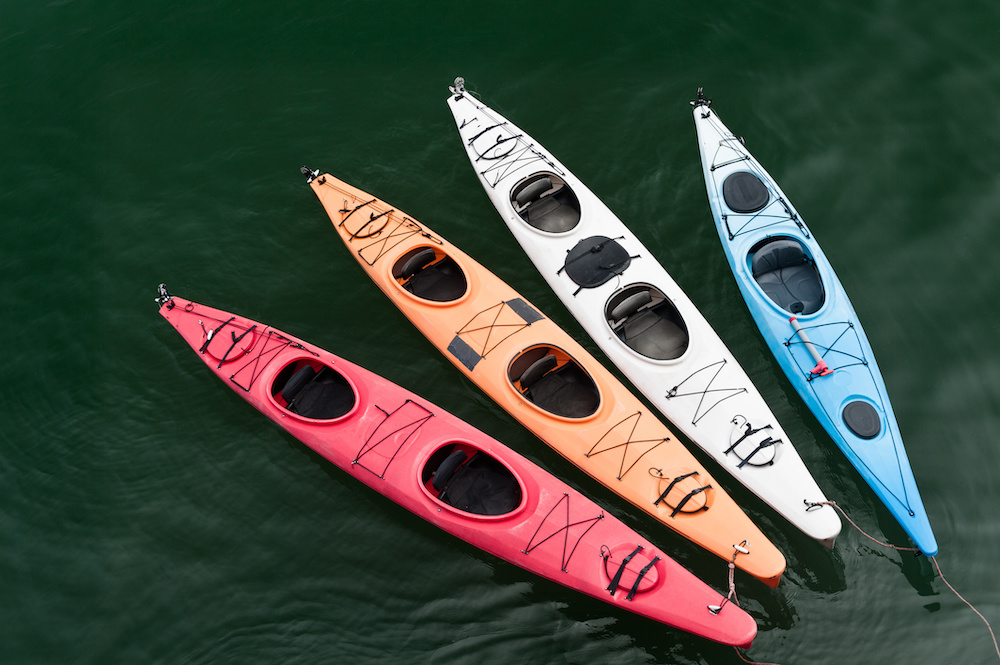How Much Does a Kayak Weigh and What Affects Its Weight?
We may earn a commission for purchases using our links. As an Amazon Associate, we earn from qualifying purchases.
We all know what a kayak is, and we may even have a picture of it in our minds.
It can be a typical kayak design with familiar colors from the most popular brands.
It's very rarely, though, that we think about its weight and wonder, how much does a kayak weigh.
There is actually plenty of factors that come into play, so kayaks come in varying masses.
Regardless of your purpose for kayaking, knowing which kayak weight you are comfortable in can contribute to your experience.
Let’s start talking about why kayak weight matters, what's the standard kayak weight, and the things that affect it.
Does Kayak Weight Matter?
If you are shopping around for kayaks, it is essential to know that weight matters.
You may think that it doesn’t since you will spend most of your time riding it in water.
This is among the most common misconceptions of kayak users that lead them to purchase the wrong one.
Some go for heavy kayaks because they are concerned with stability and features.
What they forget to consider is the time and effort needed to manage it off the water.
When looking for a kayak to purchase, go for one with a weight that you can handle.
You will be dragging and carrying your kayak for storage, into the shore, or transport most of the time.
Can you imagine lugging a kayak beyond your handling strength?
Thus, we can say that the kayak weight of your choice should be the one that's easy for you to handle.
Still, you must consider that the weight doesn’t compromise the vessel’s buoyancy, onboard space, and stability.
How Much Does a Kayak Weigh?
This is among the top questions beginners ask, especially when purchasing a kayak.
The answer to this question is that there is no fixed measurement for all kayaks.
However, there is a range where most kayak models fall on, which is from around 20 to 100 pounds.
Common Factors That Affect a Kayak’s Weight
Let us get into the specific details of the different factors that impact a kayak’s weight.
Knowing these considerations and how they affect the entire kayak’s build and performance will help you make the right pick.
Kayak Material and Construction Process
There are several materials used to build a kayak, and each has features and purposes of its own.
Knowing the type of material your kayak is made of can give you an idea of how heavy the vessel will be.
The type of material used will also affect how the kayak gets constructed.
Here are four of the typical kayak materials and builds, and how they can affect your experience:
- Thermoform
A thermoform kayak uses polyethylene pellets turned into flat sheets and getting attached to form a material of different layers.
It is durable and as stiff and light as composite kayaks.
It is an economical and versatile type than other options.
This kayak is easy to repair and has good UV protection but may become brittle over time.
- Rotomold
They often call these “Tupperware” kayaks because they are made with the same plastics produced by the brand.
The manufacturing process includes melting and molding poly powder into two parts and then heating them as one.
The result is a uniform hull and deck in one piece.
This material is effective in absorbing impacts and is pretty easy to make, so it is inexpensive compared to others.
The downside for this type is that it is heavy.
- Composite
Apart from being attractive because of their sharp lines and glossy and colorful make, these kayaks are also lightweight.
The material used to create them is kevlar or fiberglass, which is usually resin bound.
It goes through vacuum bagging that makes it lightweight with laminates to make the vessel stiff.
This kayak is long-lasting and easy to repair, but it comes at a hefty price tag because of labor.
- Wood
This is a kayak purists material that is relatively lightweight but compared to other construction builds, it can be considered heavy.
Its weight depends on the type of fiberglass resin and wood used to make it.
Since the process of creating one is complicated, it is more expensive.
As for the material used, wood is not as durable and robust as other types.

Kayak Types
There are different types of kayaks, and this is because of their varying purposes. Their builds and designs vary too.
That is where the weight difference usually lies.
Here are the most common kayak types available in the market:
- Single Kayak
A single kayak can accommodate one person and usually weighs around 30 to 50 pounds.
Of course, this will depend on the type of material used to make it.
This type of kayak can accommodate two people at the same time.
It is heavier than single kayaks, but two people can easily carry and haul it.
- Touring
Kayakers who want to explore and enjoy the waters stick to using a touring kayak.
Since this is meant to take on calmer and predictable waters, they can weigh a bit heavier than other types.
Their weight usually falls on an average of 50 to 65 pounds.
- Fishing
Since you have to carry other gear in your vessel, it’s essential to consider the weight of your fishing kayak.
Typical ones weigh from 35 to 120 pounds, while those leaning on the heavier side can reach 225 pounds.
Your choice will always rely on how much storage you need to accommodate your gear and your load.
- Inflatable
This type can easily get ripped or torn, so manufacturers must use materials to make it sturdier.
These contribute to the heaviness of the kayak.
An inflatable kayak weighs around 20 to 50 pounds, depending on the material used to construct it.
Inexpensive kayaks are lighter than expensive ones.
Of course, costlier inflatable kayaks are built with durable and heavy-duty materials.
Kayak Size
We all see kayaks that come in different lengths or sizes.
There are shorter and longer options, but what difference do these make in a kayak’s weight?
Shorter kayaks are usually more lightweight than longer kayaks.
Longer kayaks are on the heavy side that usually has something to do with the design.
That is to make sure that stability, speed, and other factors are not compromised.
Ultimately, your purpose for using the kayak will determine whether the weight matters more than the size.
How Do You Determine the Kayak’s Weight?
There are different ways to determine the kayak’s weight.
Usually, manufacturers put their product details on their websites.
You can find it under the specifications per product.
They make sure to make this available to potential or existing users.
On the other hand, you can directly go to physical stores and check the kayak's weight.
This will also open up the chance to try and feel it in person.
Getting the idea of how heavy or light it is can help you come up with a good decision on which to buy.
Kayak Weight Affects Your Experience
You now know the answer to “How much does a kayak weigh?”
Knowing the factors that impact a kayak’s weight can help you come up with the specifications you want.
It also gives you the freedom to weigh your options while considering the pros and cons of each type.
Going for a kayak model because of its build, features, or design isn’t enough to guarantee you the best kayaking experience.
So the next time you plan and decide to get a kayak for yourself, make sure to put in the weight considerations.









